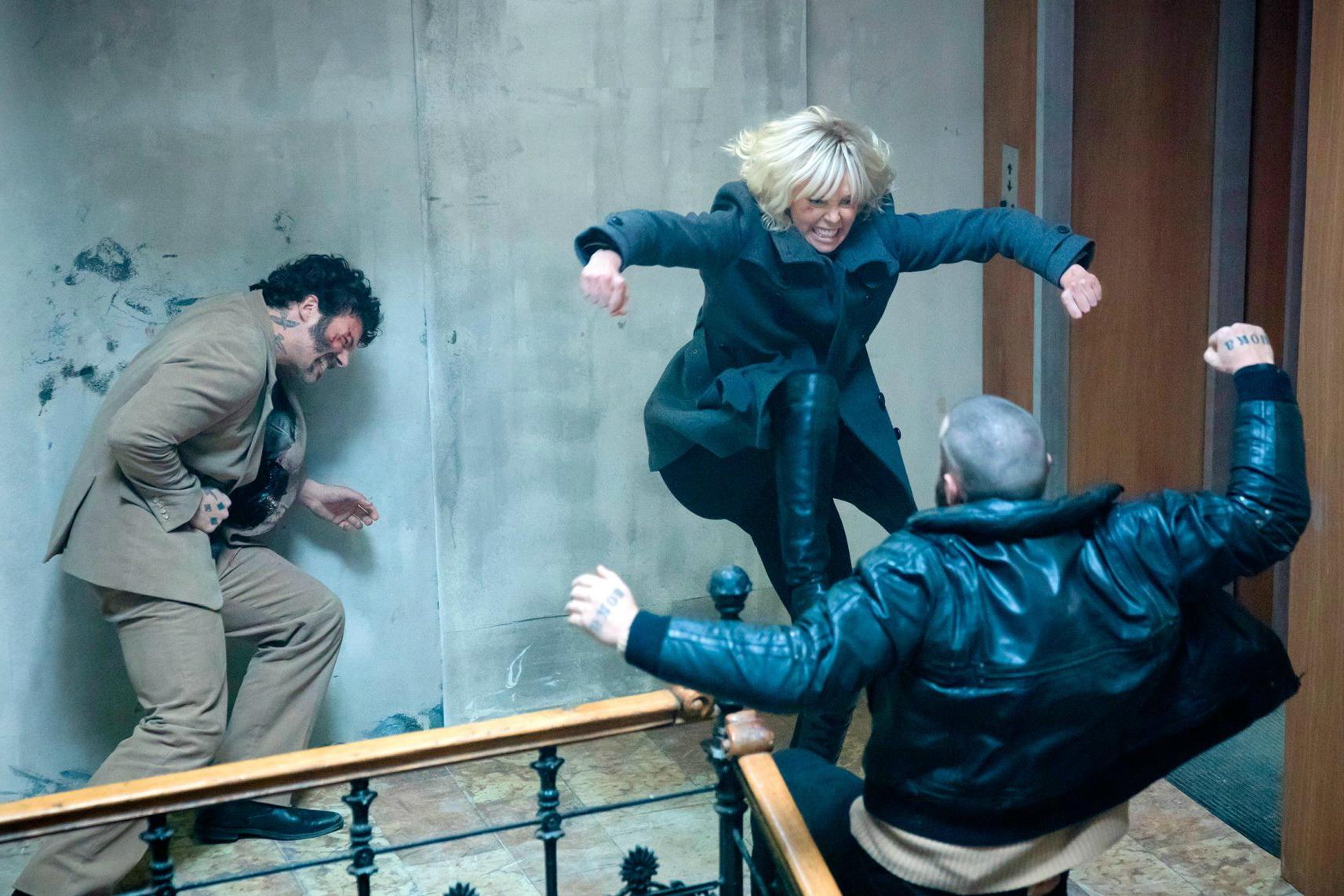Atomic Blonde review: It's Charlize Theron's world, and we're just living in it
Without a doubt one of the greatest action stars of today, Atomic Blonde offers a spectacular platform to her skills

Your support helps us to tell the story
From reproductive rights to climate change to Big Tech, The Independent is on the ground when the story is developing. Whether it's investigating the financials of Elon Musk's pro-Trump PAC or producing our latest documentary, 'The A Word', which shines a light on the American women fighting for reproductive rights, we know how important it is to parse out the facts from the messaging.
At such a critical moment in US history, we need reporters on the ground. Your donation allows us to keep sending journalists to speak to both sides of the story.
The Independent is trusted by Americans across the entire political spectrum. And unlike many other quality news outlets, we choose not to lock Americans out of our reporting and analysis with paywalls. We believe quality journalism should be available to everyone, paid for by those who can afford it.
Your support makes all the difference.If Baby Driver is the car-chase musical, does that make Atomic Blonde the… punch-face musical?
Though the two films may bear different souls – Edgar Wright’s vinyl-spin love story vs. Atomic Blonde’s cold, lethal kiss – they seem surprisingly linked in this summer’s cinematic scene. Both are movies that treat music like oxygen, with the latter sustaining itself on a barrage of ‘80s synth pop hits: New Order’s ‘Blue Monday’, David Bowie’s ‘Cat People (Putting Out Fire)', to George Michael’s ‘Father Figure’.
The film’s emotional climax is set to a slowed down cover of '99 Luftballons', while its own (brief) take on the car-chase plays out to A Flock of Seagulls’ ‘I Ran’. Musical picks so unashamed, half-absurd in their brashness that it’s clear Atomic Blonde has none of the loftier, cinephilic ambitions of Baby Driver: it’s here only to give you a damn good time.
One thing Baby Driver does lack, however, is Charlize Theron. The Killer Queen. The Torpedo. The Slayer of Weak Men. She’s Hollywood’s Daenerys Targaryen in how many emphatic, triumphant titles she deserves.
Indeed, Atomic Blonde’s musical beats may be integral, but they end up being but an echo of the blood pumping through an audience’s veins as she kicks ass in every corner of the frame. If there was ever any doubt that Theron earned her place as one of today’s greatest action stars, let that doubt be firmly quashed.
She’s the kind of woman, in a way, who feels quietly revolutionary merely by refusing to show hesitation in her own strength, and maybe that’s her appeal. Her role as patriarchy-beating amputee Imperator Furiosa in Mad Max: Fury Road had its own stoicism, but here her silence turns steely and bitter as MI6 agent Lorraine Broughton, who barely flinches when told of the death of her former lover (Sam Hargrave) at the hands of a KGB agent.
She excels at delivering a dagger stare that still carries its own nonchalance, and there’s certainly a touch of Bond about her; she even gets her own Bond girl in the form of Sofia Boutella’s naïve French agent Delphine. No gadgets, however. Instead, Lorraine’s weapons arsenal is surprisingly flexible: heels, a hose, keys, a ladder, a DJ deck. Whatever gets the job done.
Theron has found a perfect fit in director David Leitch, who first leapt to fame (and the keys to Deadpool 2) as co-director of John Wick, a film that similarly enshrined Keanu Reeves’ own brand of badassery; both possessing a lurid approach to brutality, both gritty and glamorous, in a way that frames its stars perfectly.
Admittedly, Atomic Blonde is a case of spectacle vs. storytelling, though the CGI wonders here are swapped out for something far more grounded. It’s a showcase, essentially, for the very best of what fight choreography and fight direction can offer, with Theron’s ability to do her own stunts a key boost.
The peak, certainly, arrives in a scene premised around a single continuous take (though there are some hidden cuts to be found), in which Lorraine takes down several attackers in an apartment building stairwell. Leitch holds the camera back, observant, and there’s simplicity to his approach that puts the choreography front and centre: no snappy camera tricks, no music. Just the sights and sounds of punches landing their target.

In adapting graphic novel The Coldest City, Atomic Blonde becomes a far narrative step from John Wick, dealing so deeply as it does with the twisting, backstabbing intrigue of Cold War espionage thrillers. A genre we’re perhaps not used to seeing with such a garish, neon sheen (it’s usually all dark rooms and serious men in overcoats), but it makes sense. Atomic Blonde is set in the tinderbox days right before the fall of the Berlin Wall, where the East’s punk counterculture met the West’s ‘80s excess.
Lorraine is sent to the city to retrieve a missing list of espionage agents and their real identities, though she meets first with her contact Percival (James McAvoy), who’s been undercover for so long he’s grown to have a certain affection for Berlin’s electric, dangerous edge. McAvoy, at some point in his career, decided “crazy” was his new default as an actor, but the results remain thrillingly entertaining; he’s a colourful character, in a colourful story which bounces from twist to twist.
There’s nothing to surprise, however, and the film's plot can be momentarily confusing at times, existing in a genre that's so overwrought by now that anything vaguely new actually feels like genuine innovation.
Yet, that ends up mattering little, since Atomic Blonde’s own innovations lie elsewhere entirely: namely, in the heel of Charlize Theron’s boot landing smack dab in the middle of someone’s face.
Atomic Blonde hits UK cinemas 9 August.